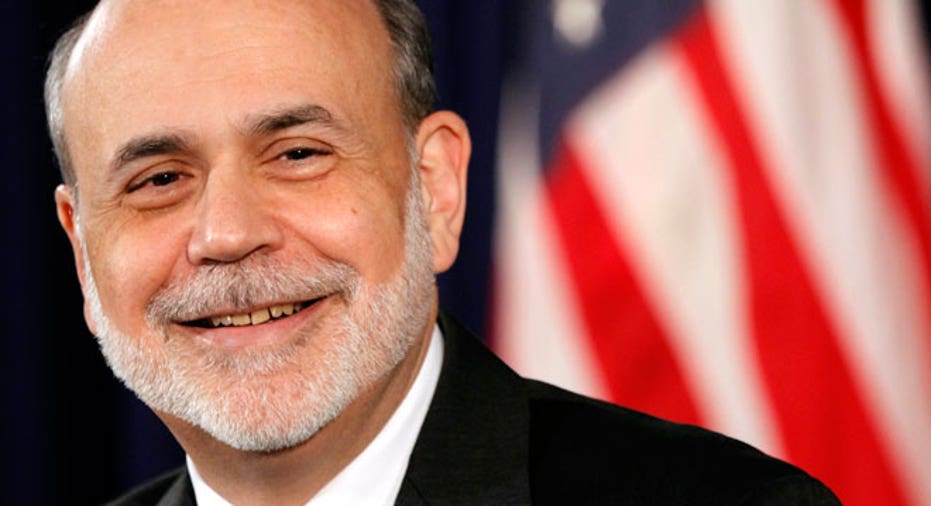Markets Eager for Something - Anything - New from Fed

So much anticipation for a Federal Reserve Board statement not likely to be markedly different from any so far released in 2013.
The Federal Open Markets Committee, which sets most Fed monetary policy, is meeting Tuesday and Wednesday and will release a statement on their most recent forecasts and potential policy shifts early tomorrow afternoon, followed by a press conference with Fed Chairman Ben Bernanke. (Most analysts agree the real news will likely come during Bernanke's Q&A with reporters.)
This is pretty much the FOMC’s monthly routine.
As has also been their monthly routine for the past six months or so, Bernanke and his colleagues will undoubtedly acknowledge some recent economic stumbling blocks – namely a leveling off of manufacturing activity in the first half of 2013 and the stubbornly high 7.5% unemployment rate.
In the same statement, however, the FOMC is widely expected to reaffirm its commitment to tapering its easy money stimulus programs, possibly as soon as September, depending on the broad trajectory of economic data between now and then.
Three rounds of bond buying programs, or quantitative easing, since the recent financial crisis have expanded the Fed’s balance sheet to more than $3.1 trillion in assets from less than $1 trillion in mid-2008, a concern to those who wonder what the impact will be when the Fed begins to unwind those assets.
The only difference between tomorrow’s message and those of the past six months is that we’re now getting closer to an actual announcement by the Fed that it will start gradually scaling back its $85 billion a month in bond purchases. That proximity seems to heighten investor anxiety.
The fall-tapering timetable has been forecast for months and it should come as no surprise to stock and bond market investors. Nevertheless, the fear is that market volatility will surge in the wake of the actual announcement because so much of the stock market’s recent gains have been attributed to the Fed’s stimulus programs.
Peter Hooper, chief economist at Deutsche Bank (NYSE:DB), believes the Fed will eventually scale back its bond purchases based solely on the economic data and regardless of its impact on stock and bond markets.
“I do not see Bernanke giving the markets any indication that the Fed will delay tapering because it is concerned about rising market volatility and levels of Treasury yields. Delaying for that reason, and thereby encouraging the building of more froth in credit markets, will only make the tapering process that much more painful when the time comes,” Hooper said Tuesday in a note to clients.
Amen to that.
Investors Seeking Clarity
What a lot of investors will certainly be looking for is more clarity from the Fed regarding its future policy moves. That is to say a more unified approach, although certainly not unanimous.
Bernanke has been consistently cagey about scaling back quantitative easing, noting always that if the economic data warrants it the Fed will move quickly to tighten monetary policy. But in the same breath he never fails to note that the Fed could also increase bond purchases if the economy trends downward.
Because the data has so far zig-zagged through the first half of 2013, Bernanke hasn’t been forced to commit one way or the other.
But he’s facing an increasingly vocal FOMC minority who favor tapering sooner rather than later. These Fed members, led by inflation hawk Richard Fisher, the Dallas Fed President, have repeatedly sounded the alarm that runaway inflation is sure to follow if the Fed maintains its easy money policies too long.
Markets were confused last month when Bernanke told a Congressional committee that the Fed could start easing in the next few months if the economic data justified it. Then a few days later notes from the Fed’s May meeting revealed that the FOMC's inflation hawks were ready to start tapering in June.
Markets gyrated for several days on the conflicting messages.
The Fed certainly hasn’t tried to hide its divisions, but a clearer message on how they plan to reconcile those differences would be helpful.
One area Fed members seem to be in nearly unanimous agreement is holding down interest rates until labor markets stabilize. The Fed has said it won’t move higher from the 0-0.25% range set four and a half years ago until the unemployment rate hits 6.5%, and there hasn’t been much public dissent on that target.
But scaling back quantitative easing could push some long-term interest rates higher, notably mortgage rates, which could negatively impact the rebounding U.S. housing market. That single dilemma pretty much sums up the tightrope the Fed has been walking for years and will continue to walk for the foreseeable future.